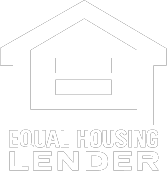Oklahoma Refinance
Refinance your home loan in Oklahoma with Scissortail Financial Home Loans. We’re a 5-star rated Mortgage Broker in Tulsa, Oklahoma.
What is a Mortgage Refinance?
A mortgage refinance is a financial transaction that involves replacing your existing mortgage with a new one, typically with different terms, interest rates, and monthly payments. It’s a strategic move that homeowners make to achieve various financial goals or address changing circumstances. Here’s a closer look at the key aspects of mortgage refinancing:
Why Refinance Your Mortgage in Oklahoma?
People consider refinancing for several reasons, and it’s essential to understand your specific goals before proceeding. Common motivations include:
Lowering Interest Rates: When market interest rates are lower than the rate on your current mortgage, refinancing can secure a more favorable interest rate, potentially reducing your long-term interest costs.
Reducing Monthly Payments: Refinancing can lead to lower monthly mortgage payments, which can free up your cash flow and provide financial relief.
Accessing Home Equity: If your home has appreciated in value or you’ve paid down a significant portion of your mortgage, a cash-out refinance allows you to access that equity in the form of cash. This can be used for home improvements, debt consolidation, or other financial needs.
Changing Loan Type: You may want to switch from an adjustable-rate mortgage (ARM) to a fixed-rate mortgage or vice versa to stabilize your interest rate or adapt to changing market conditions.
Debt Consolidation: Refinancing provides an opportunity to consolidate high-interest debt, such as credit card balances or personal loans, into your mortgage at a lower interest rate.
How Does Mortgage Refinancing Work?
The process of mortgage refinancing involves several steps:
- Assessment: Review your current financial situation, credit score, and home equity to determine if refinancing is a viable option.
- Lender Selection: Research and choose a lender or mortgage broker to assist you with the refinancing process. Compare interest rates, fees, and customer reviews to find the best fit.
- Prequalification: Contact your selected lender to begin the prequalification process. Provide financial information for an initial assessment of your eligibility.
- Loan Application: Complete the formal loan application with your chosen lender. Gather the necessary documents, such as income verification and credit reports.
- Appraisal: The lender will order an appraisal of your property to determine its current value. This step is crucial, especially for cash-out refinances.
- Underwriting: The lender’s underwriting team will review your application, creditworthiness, and property appraisal. They will assess your eligibility and determine the terms of your new loan.
- Loan Approval: Once your application is approved, you’ll receive a loan approval letter with the final terms of your refinance.
- Closing: Schedule a closing date with your lender, where you’ll sign the necessary documents to finalize the refinance. This may involve paying closing costs.
Benefits of Oklahoma Mortgage Refinancing
Mortgage refinancing offers several potential benefits, including:
Lower Monthly Payments: By securing a lower interest rate, you can reduce your monthly mortgage payments, which can improve your financial flexibility.
Interest Savings: Refinancing at a lower rate can lead to significant long-term interest savings over the life of your loan.
Access to Equity: Cash-out refinancing provides access to your home’s equity, allowing you to use it for important financial goals.
Debt Consolidation: Refinancing can help consolidate high-interest debt into a more manageable mortgage with a lower interest rate.
Change in Loan Terms: Refinancing allows you to change your loan terms, such as switching from an adjustable-rate mortgage (ARM) to a fixed-rate mortgage for more stability.
Things To Consider Before Refinancing
Before proceeding with a mortgage refinance, it’s essential to consider potential drawbacks and factors that may affect your decision. These include:
- Closing Costs: Refinancing typically involves closing costs, which can add to the overall expense of the transaction. It’s important to calculate whether the potential savings justify these costs.
- Creditworthiness: Lenders will assess your credit score and financial stability when considering your eligibility for refinancing. A good credit score is often necessary for favorable terms.
- Loan Term: Extending your loan term through refinancing may lead to lower monthly payments but could increase your long-term interest costs.
- Equity Requirements: To qualify for cash-out refinancing, you’ll need sufficient equity in your home. Lenders often have specific loan-to-value ratio requirements.
- Financial Goals: Consider your financial objectives and whether refinancing aligns with them. Ensure that refinancing serves a purpose that benefits your financial situation.
Mortgage refinancing can be a powerful tool for homeowners in Oklahoma to improve their financial outlook, reduce costs, and achieve various goals. However, it’s essential to approach the process with careful consideration and a clear understanding of your objectives.
Types of Mortgage Refinances
Mortgage refinancing in Oklahoma offers homeowners several options tailored to their specific financial needs and goals. Understanding these types of refinances can help you make an informed decision about which one aligns best with your circumstances. Here are the primary types of mortgage refinances:
Rate and Term Refinance
Rate and term refinance is the most common type of mortgage refinance. In this scenario, you replace your existing mortgage with a new one that comes with improved terms, such as a lower interest rate or a shorter loan term. Here’s a closer look:
Benefits: Rate and term refinancing can lead to significant savings over the life of your loan. By securing a lower interest rate, you can reduce your monthly payments and potentially pay off your mortgage faster.
Eligibility: To qualify for a rate and term refinance, you’ll typically need a good credit score and a stable financial situation. Lenders will assess your creditworthiness and financial history to determine eligibility.
Cash-Out Refinance
A cash-out refinance allows homeowners to borrow more than their current mortgage balance, receiving the excess amount in cash. Here are important details to consider:
Common Uses: Cash-out refinancing provides access to your home’s equity, which can be used for various purposes. Many homeowners use these funds for home improvements, covering education expenses, consolidating high-interest debt, or addressing other financial needs.
Pros and Cons: While cash-out refinancing can provide access to valuable funds, it’s essential to use the cash responsibly. Keep in mind that increasing your loan amount will lead to higher monthly mortgage payments.
Special Refinance Programs
In addition to rate and term and cash-out refinances, there are special refinance programs designed to simplify the process and cater to specific needs. These include:
FHA Streamline Refinance: This program is available to homeowners with an existing FHA loan. It offers a streamlined application process and may not require a new appraisal or extensive documentation.
VA Interest Rate Reduction Refinance Loan (IRRRL): Eligible veterans and active-duty service members can consider the VA IRRRL program. It aims to reduce interest rates on existing VA loans with minimal paperwork.
These special programs can provide a more streamlined and efficient path to refinancing, depending on your current mortgage type and eligibility.
Get Started With Your FHA Loan Today

1. Take The Home
Buyer Quiz

2. Get
Pre-Approved

3. Start Shopping
For Homes
Oklahoma Mortgage Refinance Requirements
Before you embark on the mortgage refinancing journey, it’s important to understand the requirements you’ll need to meet to qualify for a refinance. Lenders have specific criteria to assess your eligibility. Here are the common requirements you should be aware of:
Credit Score
A solid credit score is often a fundamental requirement for mortgage refinancing. Lenders use your credit score to gauge your creditworthiness and assess the risk associated with lending to you. While credit score requirements can vary among lenders, a score of 620 or higher is typically considered a good starting point. However, some refinancing programs may have different credit score requirements, even as low as a score of 500, so it’s essential to inquire with your chosen lender.
Sufficient Equity
The amount of equity you have in your home is a crucial factor in determining your eligibility for a refinance, especially for cash-out refinancing. Equity is the difference between your home’s current market value and the remaining balance on your mortgage. Lenders often have specific loan-to-value (LTV) ratio requirements, typically requiring you to maintain a certain level of equity in your property. The exact LTV ratio can vary among lenders and refinance programs.
Stable Income
Lenders want assurance that you can comfortably manage the new mortgage terms. To evaluate this, they will assess your income and employment history. Having a stable source of income is essential for mortgage refinancing eligibility. You’ll need to provide documentation of your income, such as pay stubs, W-2 forms, or tax returns, to demonstrate your ability to meet the new loan terms.
Documentation
Prepare to provide various documents during the refinancing process. These may include:
- Income Verification: Proof of your income, such as pay stubs, W-2 forms, or tax returns.
- Asset Documentation: Information about your assets, including bank statements and investment account statements.
- Credit History: Your credit report, which lenders use to assess your creditworthiness.
- Property Appraisal: An appraisal of your home to determine its current market value.
The specific documentation requirements can vary depending on the lender and the type of refinance you choose. It’s crucial to work closely with your selected lender to ensure you provide all necessary documents promptly.
Meeting these requirements is essential to qualify for mortgage refinancing in Oklahoma. Keep in mind that different refinance programs may have additional eligibility criteria or specific documentation needs. Therefore, it’s advisable to consult with your chosen lender to understand their specific requirements and to determine the refinance program that best suits your needs and financial situation.
Home Loans
Oklahoma Mortgage Programs
Professional and Informative!-
Extremely professional, smooth transitions, very informative. I highly recommend him. Any questions I had were answered and they always called back in a timely manner.
How To Start Your Mortgage Refinance
Embarking on the journey of mortgage refinancing requires careful planning and attention to detail. Here’s a step-by-step guide on how to initiate your mortgage refinance process in Oklahoma:
1. Assess Your Financial Goals: Before you start the refinancing process, take the time to evaluate your financial goals. Consider why you want to refinance your mortgage. Is it to lower your monthly payments, reduce your interest rate, access home equity, or consolidate debt? Having a clear understanding of your objectives will help you make informed decisions throughout the process.
2. Check Your Credit Score: Your credit score plays a significant role in the refinancing process. Obtain a copy of your credit report and review it for any inaccuracies or issues. If your credit score needs improvement, take steps to address any outstanding debts or issues that may affect your creditworthiness. A better credit score can lead to more favorable refinancing terms.
3. Research Lenders: Explore different lenders and mortgage brokers in Oklahoma to find the one that best suits your needs. Consider factors such as interest rates, fees, customer reviews, and the level of customer service. Request quotes from multiple lenders to compare offers and choose the one that offers the most favorable terms.
4. Prequalification: Contact your selected lender to begin the prequalification process. During this stage, you'll provide basic financial information, such as your income, employment status, and assets. The lender will assess this information to provide an initial estimate of the loan amount you may qualify for and the interest rate.
5. Complete the Loan Application: Once you've selected a lender and decided to move forward, you'll need to complete the formal loan application. Be prepared to provide detailed financial documentation, including:
Income Verification: Provide pay stubs, W-2 forms, or tax returns to verify your income.
Asset Documentation: Share bank statements and investment account statements to demonstrate your financial stability.
Credit Check: The lender will conduct a credit check to assess your creditworthiness.
Property Appraisal: The lender will order an appraisal to determine your home's current market value.
6. Underwriting and Approval: After submitting your application, the lender's underwriting team will review all the provided information. They will assess your eligibility based on factors such as creditworthiness, income, and the property's appraisal. If you meet the criteria, your application will be approved.
7. Loan Closing: Once your application is approved, the lender will schedule a loan closing. At the closing, you'll sign the necessary documents to finalize the refinance. This may include paying closing costs, which can vary depending on the lender and the type of refinance.
We're Your Oklahoma Mortgage Brokers
FAQ's
Oklahoma Refinance FAQ’s
The timeline for closing a mortgage refinance can vary, but it typically takes anywhere from 30 to 45 days. The exact duration depends on factors such as the complexity of your refinance, the lender’s processing speed, and the thoroughness of your documentation.
Yes, you can refinance your mortgage in Oklahoma if your credit score has improved. A higher credit score may make you eligible for better interest rates and more favorable loan terms, potentially leading to lower monthly payments and interest savings.
While it may be challenging to refinance with bad credit, it’s not impossible. Some lenders offer refinance programs specifically designed for borrowers with lower credit scores. However, these programs may come with higher interest rates and less favorable terms.
Yes, you can refinance an existing FHA loan through an FHA Streamline Refinance. This program is designed to simplify the refinancing process for FHA borrowers and may require less documentation and lower closing costs.
It’s essential to review your existing mortgage agreement to check for prepayment penalties. While some loans may have prepayment penalties, many modern mortgages do not impose such fees. Be sure to discuss this with your lender during the refinancing process.
Yes, it’s possible to include closing costs in your refinanced mortgage. This is known as a “no-closing-cost refinance.” In this scenario, the lender may cover the closing costs in exchange for a slightly higher interest rate on your new mortgage.
No, there are typically no restrictions on how you can use the cash from a cash-out refinance. Many homeowners use these funds for home improvements, debt consolidation, education expenses, or other financial needs. It’s essential to use the cash responsibly and align it with your financial goals.
Yes, you can refinance your mortgage shortly after purchasing your home. However, it’s advisable to consider your goals and financial situation carefully. Refinancing too soon may not result in significant savings, as you’ll be paying off the initial costs associated with your new mortgage.
